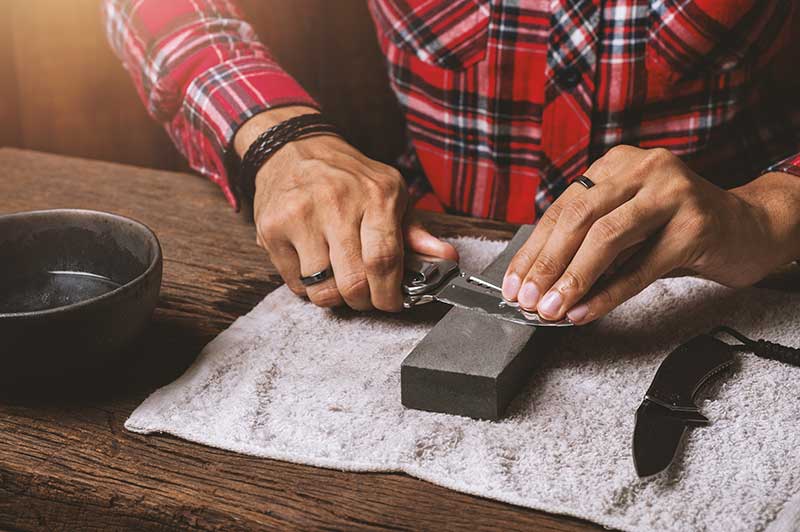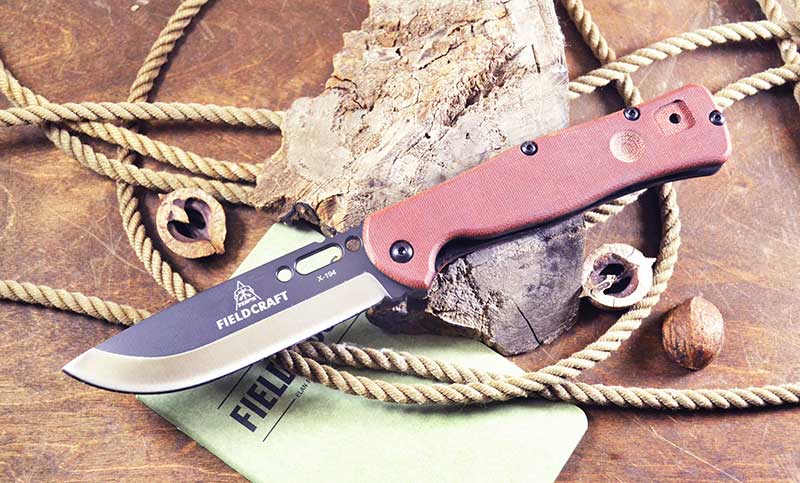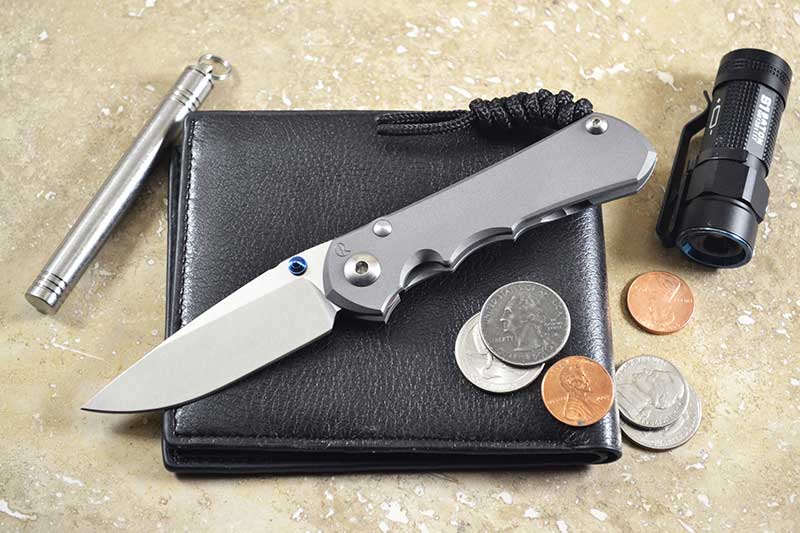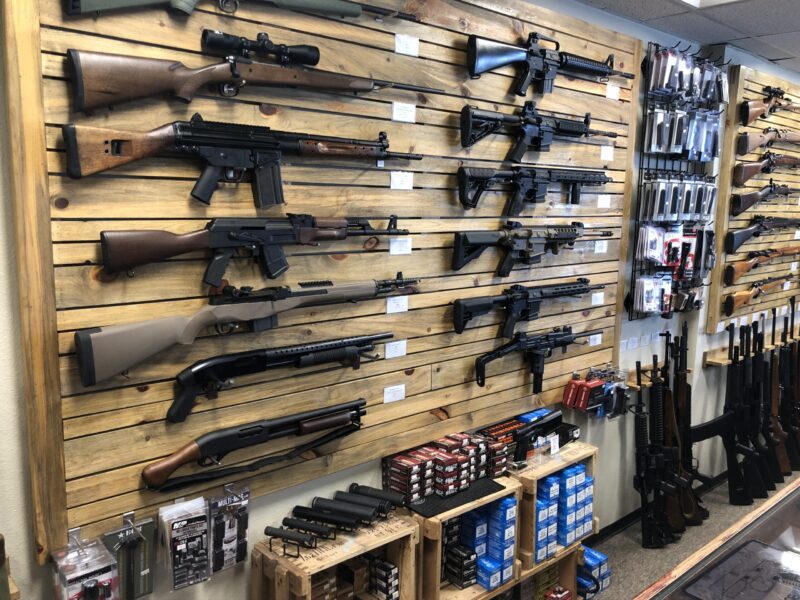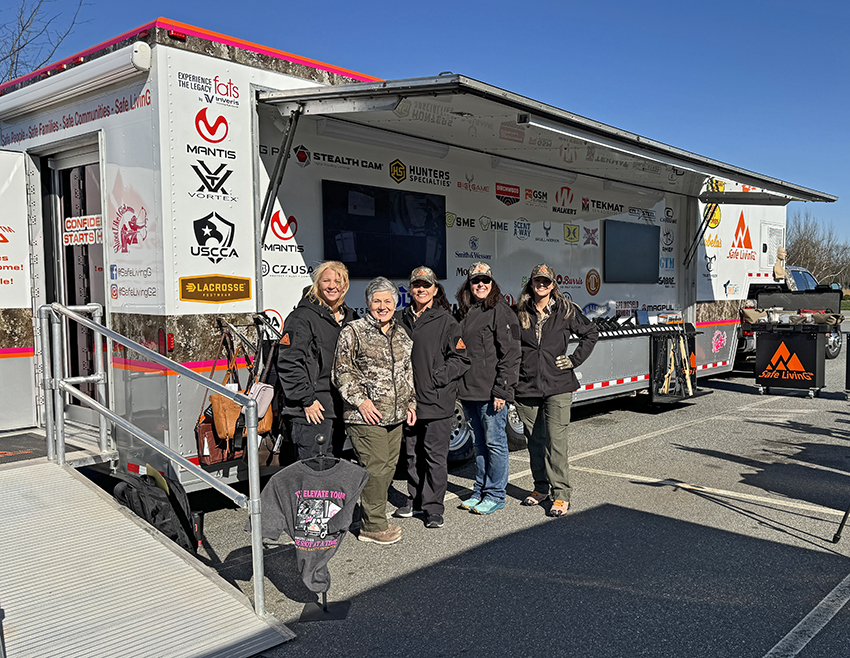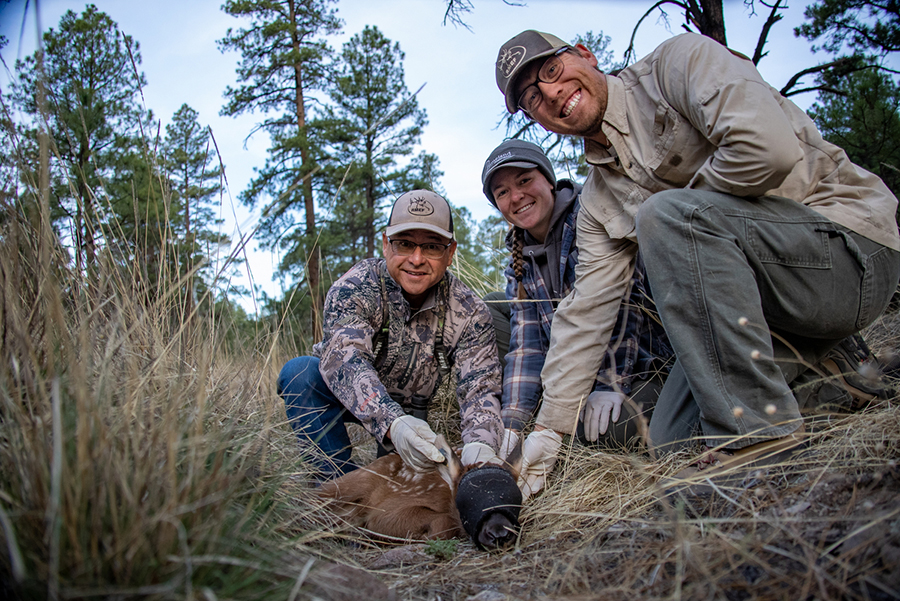Selling Steel!
Understanding Steel Sells More Knives
Blade steel to a knife is like ammunition to a firearm. Just as your firearms customers choose ammunition, blade steel is a huge consideration for knife customers. The explosion on the scene of the modern tactical folder spurred by the Gulf Wars in the early 1990s brought with it technological advancements never seen in the cutlery industry.
Indeed, this genre rules the roost today and many tactical folders are now simply known as EDCs or “everyday carries.”
Surprisingly, during this same period of time, high-carbon or “tool” steels, those dinosaurs of eons of knifemaking, thrived and still make up a huge part of cutlery sold today — primarily in fixed-blade knives.
Why is that? It all depends on the purpose of the knife. We’re going to look at low-priced high-carbon steels (non-stainless) versus state of the art, proprietary powdered steels made specifically for the cutlery market. There are many steels across the spectrum between these two steel types, but by studying these two opposite ends of the cost range you’ll get an idea of why the price differences are astoundingly different.
Blade steel to a knife is like ammunition to a firearm. Just as your firearms customers choose ammunition, blade steel is a huge consideration for knife customers.
High-carbon, Low Price
High-carbon steels purportedly date back to the third century in China, but the credit goes to Henry Bessemer, who developed a process for producing it inexpensively around 1856 — kicking off the modern Age of Steel. TOPS Knives is one of the most successful manufacturers of high-carbon steel knives today, building their extensive line of fixed-blade knives on 1095 high-carbon steel.
“TOPS has been using 1095 since the company started,” informed Craig Powell, TOPS GM. “The main reason why is it’s an excellent steel for a knife out in the field. Maintaining the edge on 1095 is easier than most other steels. I’ve seen a jungle guide put a working edge on one of our machetes with wet sand as an abrasive material. That’s not ideal, but I doubt it would be doable with most other steels out there. 1095 also takes an edge really well.
“Some steels require a ton of patience and precision to get a good edge on it,” Powell continued. “They may hold that edge for a long time, but it’s tricky to put it there in the first place.”
Powell is being kind. Many of today’s “super steels” can only be sharpened using diamond or ceramic stones. Lose the sharpener, and you’re stuck with an expensive paperweight. Carbon-steel blades can be sharpened on standard carbide stones that are inexpensive to use — and even a rock will work in a pinch. This is a huge advantage to hunters, campers and survivalists.
Powell is the first to admit the high-carbon steels are more susceptible to rust and corrosion than their stainless counterparts.
“The main drawback of 1095 is it’s not rust resistant,” he noted. “However, when a good, quality coating is applied, powder coat or Cerakote for example, and when someone takes proper care of their tools, rust can be kept at bay.”
For what TOPS is trying to accomplish, 1095 is one of the best options out there.
“This is why we’re able to sell knives with 1095 so successfully,” Powell contends. “We make knives as tools, meant to be used. 1095 is a great steel for tools that are made to be used. Just as important as steel selection, however, is heat treat. A lot of people spend a lot of time talking about the steel choice, but don’t mention the heat treat. This is what actually turns a piece of steel into a knife. It’s a step TOPS has always put a very high priority on. If the heat treat isn’t right, it makes no difference what steel is used. It just won’t be a good knife. When you’re able to combine a good choice of steel with a quality heat treat, it’s going to be a good knife.”
Super Stainless Steels
Stainless steel, which uses chromium for its resistance to corrosion, has been around over 100 years, but there were no proprietary alloys for knives until the turn of this century. Now they are aplenty.
“Prior to 2000, there was no stainless steel that had been specifically alloyed for the knife industry,” enlightened Anne Reeve, the CEO of Chris Reeve Knives. “In early 2000, Chris Reeve and other knifemakers met the metallurgists at Crucible Industries, a mill based in upstate New York that had pioneered the production of powder metallurgy, and expressed an interest in making steels specifically for the knife industry.”
A revolution was born. In 2001, Chris Reeve Knives adopted Crucible’s first release of the company’s proprietary blade steel (dubbed CPM S30V) in the company’s upscale tactical folder line and powdered steel was off to the races. Both custom knifemakers and manufacturers followed Reeve’s lead and two other mills, Böhler Uddeholm of Germany and Carpenter Steel of the U.S., are now in the fray as well. In 2009 a newer, better Crucible version (CPM S35VN) was in wide use and CPM S45VN hit the market in 2020.
“For Chris Reeves Knives, a company that strives to be at the forefront of knife industry innovation, it has been a very beneficial association with Crucible and an honor to spearhead development,” Reeve said.
What are the advantages of these super steels?
“Simplistically, the making of powder metal can be described as forcing all the base metals that make up a steel into powder,” Reeve explained.
“The different components can then be mixed much more thoroughly to make a cleaner and consistent steel. Using this method of manufacture, metallurgists are better able to refine the steel to optimize performance. The whole idea about a good knife is it performs well!”
The upside to this revolution has been vastly improved steels that not only cut like a house on fire, but also have excellent edge retention. The downside is they add to the price of the knife and, as mentioned above, require special diamond and/or ceramic mediums to sharpen.
Selling Today’s Steels
Both of the companies we’ve highlighted here are well established and have stellar reputations. This, in itself, is a strong selling point. Where they differ is in their target consumers. The TOPS knife user is a hunter, camper or hardcore survivalist — all of whom need a cutting tool that can take a beating just by the nature of their tasks. TOPS offers a broad range of pure tactical fixed-blades as well.
“A powdered steel blade compared to 1095 high-carbon can cost 20% to 50% higher or more, and that’s just the blade,” noted TOPS’ Powell. “Some people have no issue paying a higher price, so we do offer some models using stainless and super steels — but by and large, we’re focused on making tools for users, not necessarily expensive knives.”
Company reputation, price, the ability to field sharpen and replace-ability are all good sales points for high-carbon steels.
On the other end of the spectrum you have Chris Reeve knives, which are upscale tactical folders serving most of their customers as EDCs. All of Chris Reeve’s folding knives are mated to titanium handle frames, adding to their cost.
According to Anne, “CPM steels are generally used in higher-quality knives where it is not just the cost of the steel that justifies the price, but also the tolerances and other materials. If a customer is less concerned about high quality and is looking at a lower price point, the qualities of CPM might become moot.”
This is a nice way of saying you pay for what you get, and you do get a lot of quality when you’re buying a Chris Reeve knife.
They are scads of blade steels in the cutlery market, but you and your sale staff don’t have to take a crash course in metallurgy to sell them. As you add knives with new steels to the inventory, do a little research on their benefits. A little knowledge goes a long way in selling steel!

